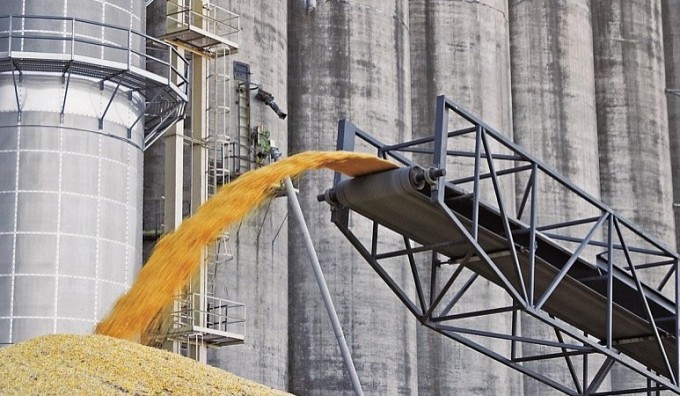
The harvest is nearing completion in Kazakhstan. Grain has been harvested on nearly 99% of the total sown area—15.8 million hectares. Since the start of the harvest, 6.7 million tons of grain have been received in elevators for storage, double the amount for the same period last year (3.4 million tons). More than half of this volume (54%) is third-class grain. This was reported by the government press service following a meeting of the harvest task force.
"The occupancy balance of licensed grain storage facilities at the peak of grain reception is quite stable: 5.4 million tons (40%) are occupied, while 7.8 million tons are available," the government reported.
During the meeting, it was noted that the regions are sufficiently supplied with reduced-cost diesel fuel, but there is a shortage of gas for grain drying. Deputy Prime Minister Serik Zhumangarin instructed the Ministry of Energy to send additional gas to the regions to avoid delays in grain reception. According to government data, the legume harvest in Kazakhstan is almost complete, with a record volume of over 1 million tons already collected. Corn harvesting continues (134,000 hectares, 77%), oilseeds (3.5 million tons, 74%), and potato harvesting is complete (3 million tons), along with other vegetables (3.9 million tons), and melons (2.6 million tons).
According to Deputy Minister of Agriculture Azat Sultanov, sugar refineries began accepting the new sugar beet harvest in the first ten days of October. To prevent vehicle queues from congesting, an electronic queue system for sugar beet acceptance has been introduced at Aksu Kant. A total of 154,000 tons of sugar beet have already been harvested in Zhetysu.
The government noted that the timely application of fertilizers and early funding for the 2025 spring field work played a significant role in the high harvest figures. Of the 700 billion tenge allocated for sowing, 502 billion tenge have been utilized. The Agrarian Credit Corporation has already begun accepting applications from farmers for preferential financing for the 2026 sowing campaign.
Furthermore, of the 250 billion tenge allocated for preferential leasing of agricultural machinery, applications for 253 billion tenge have already been submitted. This means that the agricultural machinery fleet will be updated by approximately 8,000 units.
The Damu Fund continues to implement a program guaranteeing 85% of the loan amount for spring and fall fieldwork. This allows farmers with insufficient collateral to receive preferential loans for the spring and fall fieldwork campaign. To date, 1,336 guarantees have been issued for a total of 196.9 billion tenge, bringing the total loan amount to 231.7 billion tenge.